Articles
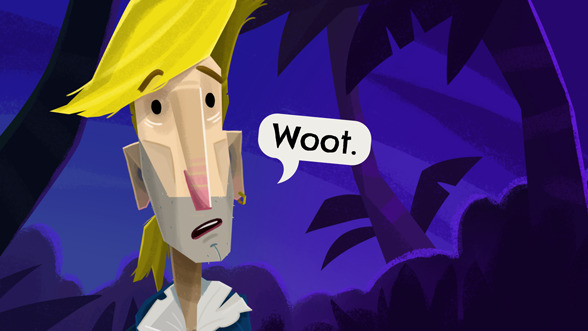
Return to Monkey Island Reviewed Page Two
Spoiler Images?
Though he blessed The Curse of Monkey Island as a worthy successor when it came out, Ron wasn’t too shy to point out that he would have gone a different way. His thoughts on the subsequent games were never recorded in any detail, raising doubt that he’d even played them. But it seems that when the stars aligned to make Return and thus concern himself with the practical matter of how it might deal with the contributions made while he was away, Ron and Dave engaged with the previous sequels anew.
It’s satisfying, even touching, to see how Return manages to find a way to keep the rest of the series under the tent. There’s no doubt it’s the first two games that Return is overtly proceeding from, with the others largely being granted the courtesy of not being stepped on, but there are occasional deep cuts that make it clear somebody was doing their research. The line bisecting the “Gilbert Era” with what followed is another one that Return happily blurs. This softening may be another artifact of the sheer amount of time that has passed, but whatever the reason, the game is better for not ostracizing what the series delivered under its interregnum custodians.
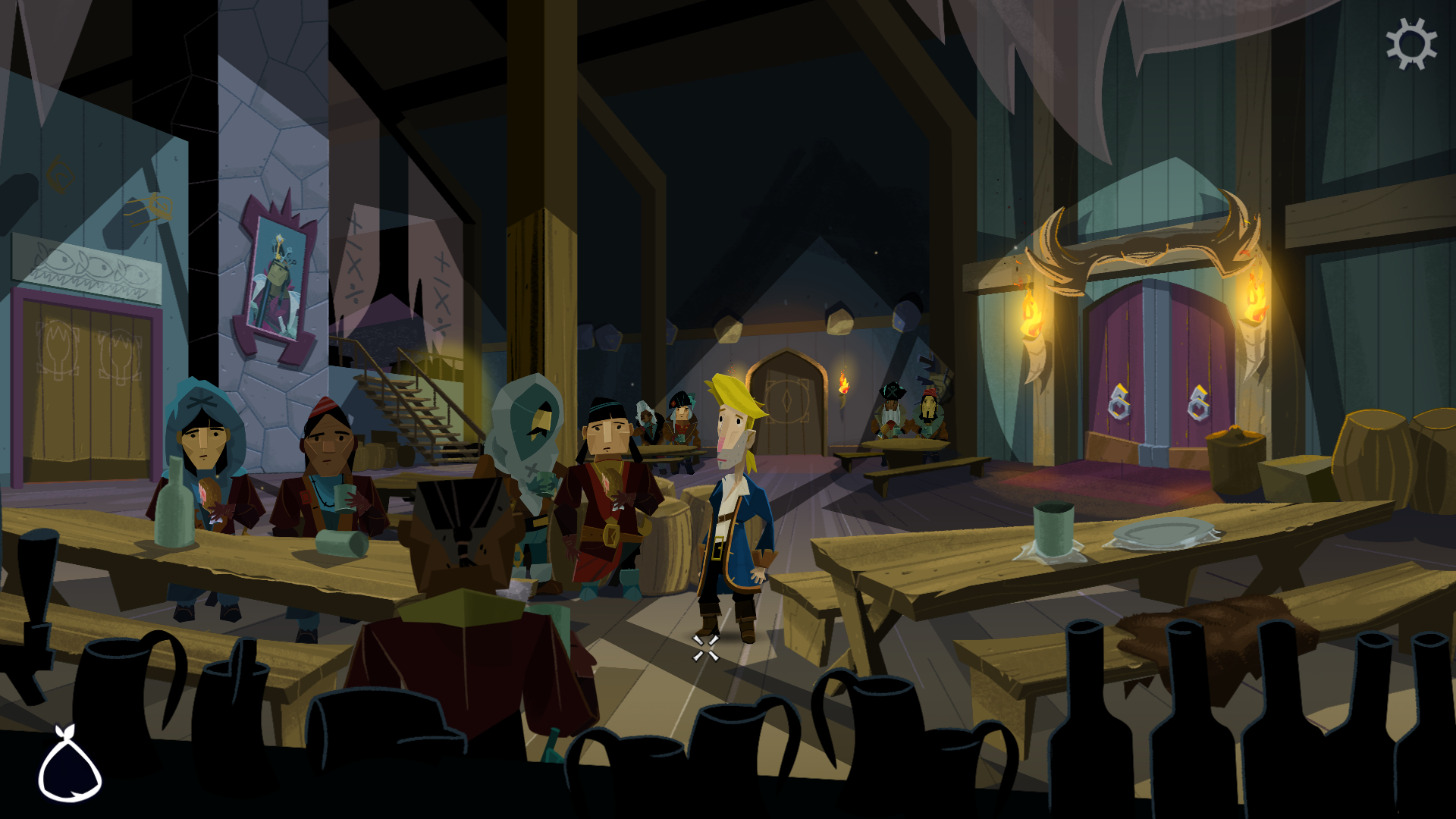
The soundtrack is a barnburner -- and a bit of a rebound, too. Though Michael Land delivered an excellent score for Tales of Monkey Island, he got shorted on the implementation, his compositions relegated to recorded MIDIs (or even actual MIDIs, if you’re one of the eight people who played it on WiiWare) after two installments that had set a standard for live instruments. The fans are still awaiting their Forgiveness Frog on that one (might I suggest a remaster?), but in the meantine, the production values are back to a worthy elevation with Return, which reunites Land with fellow Monkey Island veterans Peter McConnell and Clint Bajakian, while the don’t-bother-making-a-game-without-them Bay Area Sound (Jared Emerson-Johnson) unleash their usual [mix‘n’]mojo to take the sound design to spectacular heights. If we’d gotten nothing from this game but the album, we’d have profited handsomely.
The voicework, directed by the equally dependable Khris Brown (whose recent credits include Psychonauts 2), clears another bar that the series had set at nosebleed altitudes. It’s fun to realize that this is the first time Ron wrote for Guybrush knowing that Dominic Armato (never better) would be his vessel, and it’s a compatible collaboration indeed. I’m honestly not sure how much Guybrush is meant to have aged across the preceding five games (seems he was perpetually twentyish for an awfully long time), but this game explicitly acknowledges a sizeable passage of time, and Dom brings that dimension to his performance. Guybrush is only good for eight minutes underwater now, which tells you all you need to know. And you'll already be aware from clips that he’s far from the only vocal continuity -- most of the reprised characters utilize whichever voice actor originated them in Curse, Escape, or the special editions (among the exceptions is Stan, who is carried forward superbly by his Tales performer, Gavin Hammon).
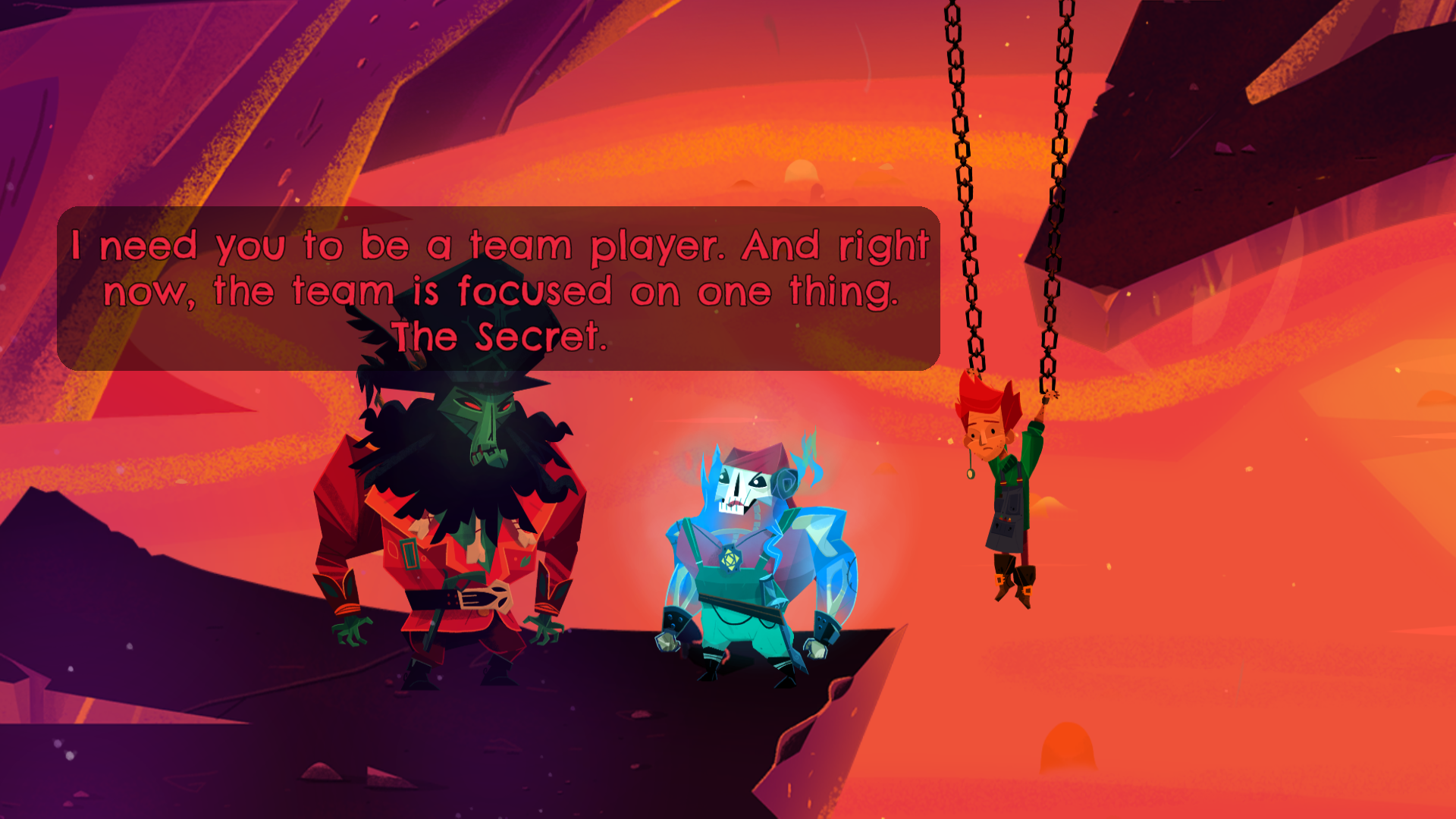
As has been widely reported, however, there is a major recast to deal with. Earl Boen, who until now has been the voice of LeChuck, reluctantly turned down another reprisal. It is said that actor, who is around eighty now, actually exited retirement to participate in Tales of Monkey Island back in 2009, which gives you a sense of how much he loves the character. For him to have stepped down voluntarily for this game suggests that his reasons were nothing short of feeling physically unable to deliver. Filling the fearsome undead pirate’s boots is Jess Harnell (Already blooded in the ways of the monkey, Harnell previously voiced a few supporting characters in Escape, as well as in Secret’s special edition), who I’m happy to say succeeds, managing to honor the character’s established personality without attempting an outright impersonation of his predecessor. As for Boen: the brutal climax of Tales of Monkey Island saw LeChuck at arguably his most evil of the whole series up to that point. If that was Boen’s final word on LeChuck, he went out on a high note.
A cardinal joy of these games is interacting with a large cast that extends far beyond the headliners, and it’s only in keeping with tradition that the peripheral roles are performed to perfection all the way down to the bit parts. That’s no small point nor mean feat, because this game has a ton of dialog. More, in fact, than any other voiced Monkey Island game. (The statistics: Curse had a juggernaut of a script in its day with over 8,000 recorded lines, then Escape went downright crackers with 10,000 lines. Return takes the belt with a staggering 14,000.) Fortunately, I don’t have to refer to quantity alone when I say that Dave and Ron have outdone themselves.
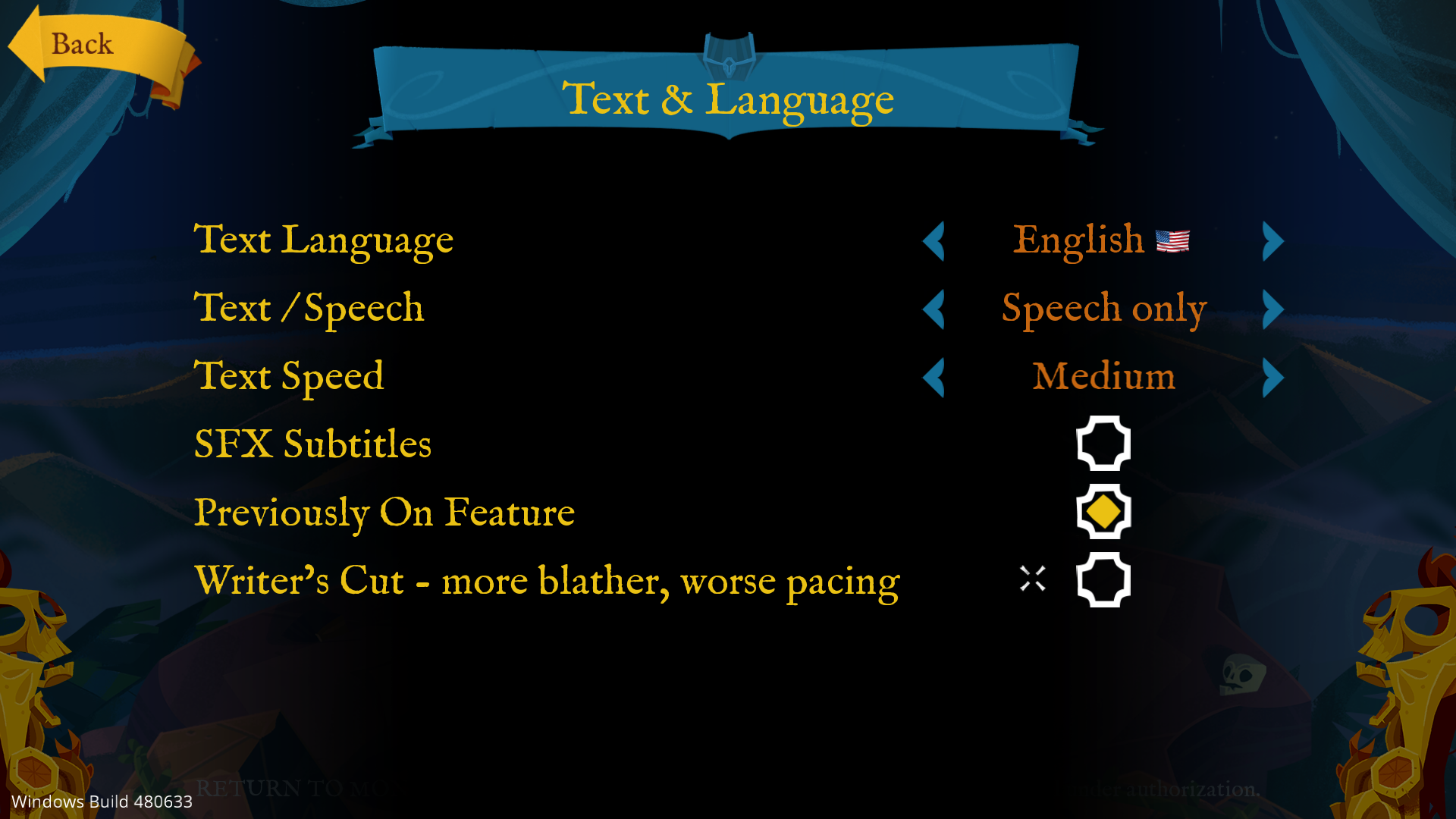
There’s an asterisk next to that huge number, however, which leads me to a strange feature of Return. The menu houses a toggle feature labeled “Writer’s Cut.” Conceptually, it’s not unlike the in-jokes toggle retroactively added to Thimbleweed Park, but instead of unleashing a torrent of self-referential comedy it just unleashes more dialog, in general. I played with this setting turned off, as I would imagine anything that fit organically into the game wouldn’t have been deemed expendable in the first place. But it should be fun to play the pacing-be-damned version somewhere down the line, the way grown adults have been reported to blow an entire Saturday in their pajamas on the Lord of the Rings extended editions.
The Monkey Island series has long experimented with accessibility-broadening tactics: the second and third games approached more casual players by offering them an easier mode with fewer puzzles (indeed, so does Return), Escape just straight up capitulated by throwing in a walkthrough in the box, and Tales would have Guybrush “think aloud” when progress wasn’t being made, at a frequency that was adjustable. Given the premise that if players are going to seek help, they should at least find it in-game, Return opts for the straightforward but beautifully implemented approach of throwing a hint book right in Guybrush’s inventory, which may be the most formidable weapon yet in the war against internet walkthroughs.
Another feature found in the menu is the utterly charming Scrapbook, consisting of interactive recaps of Guybrush’s earlier adventures. Though ostensibly meant to offer a crash course to newcomers, it's a treat to page through for anybody, and don’t neglect to check back for an addition after you’ve completed the game. Think the “Writer’s Cut” doesn’t make this unusually replayable enough for an adventure game? Then you may be particularly suited to appreciate Return’s trivia card scavenger hunt, a little in-game collect-em-all tossed in for no added charge.
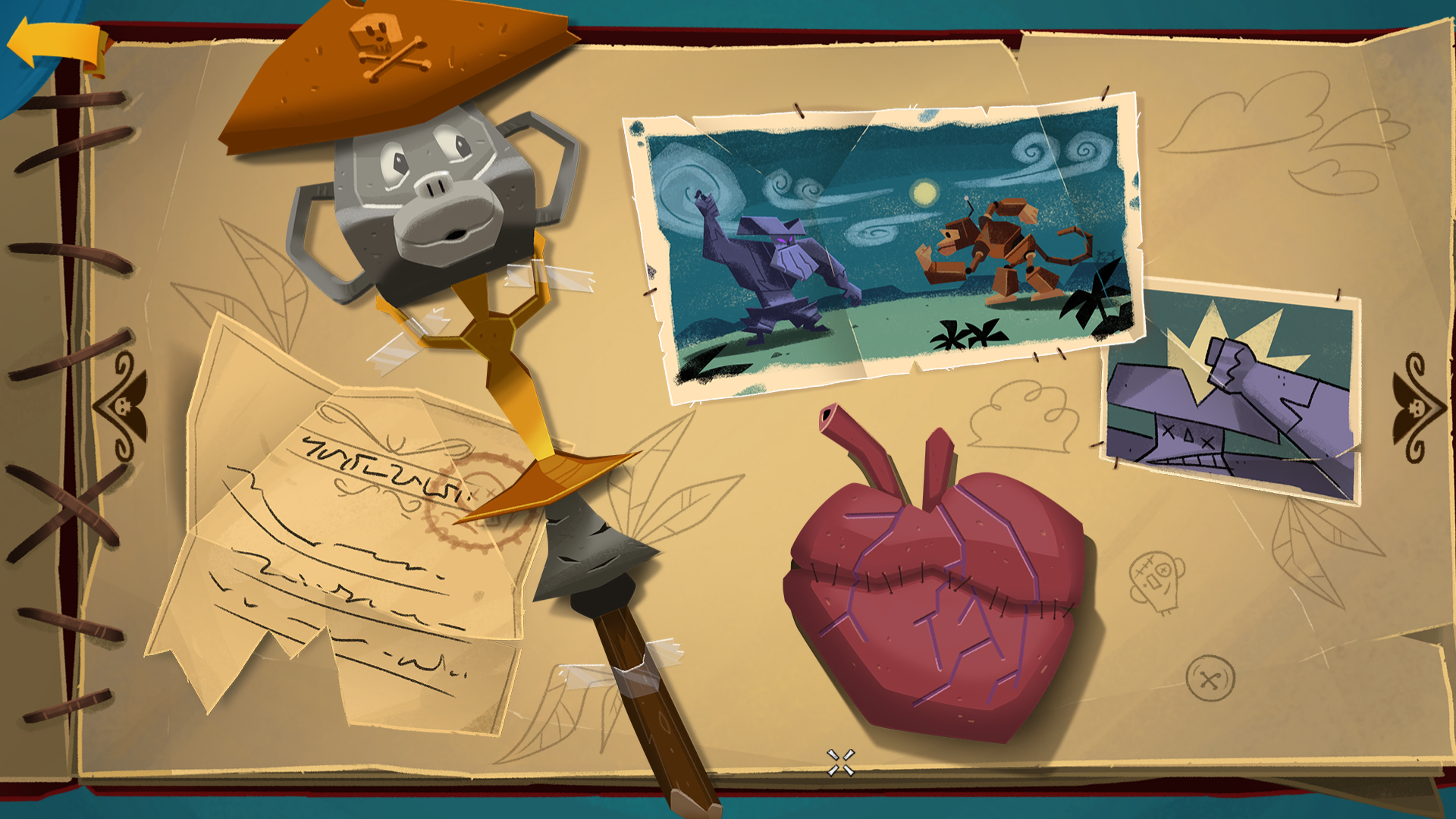
A new Monkey Island game is an event by definition. Installments arrive only after extended hiatuses, and have to a one been true labors of love. Had anyone made a sixth Monkey Island after thirteen years (the longest gap yet), it would have been headline news. Given the names and context behind Return, it’s something special. Turns out that it’s really good, too. But it is, above all, a video game. Made by a team of mortals, however exceptional, who were looking to provide, and according to some sources might have themselves even been having, fun.
Just thought I’d mention it.